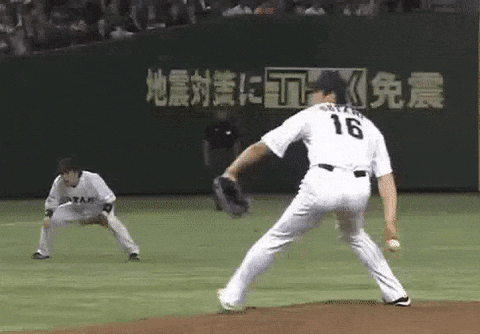Collapsing Lead Knee: One of the Most Significant Power Killers in Pitching
Sun Feb 2, 2025 by OnBaseU
At OnBaseU, we advocate for efficiency over style. We don’t care what your pitching motion looks like as long as it matches what your body can physically do.
Though we believe there are an infinite number of ways to pitch successfully, there are not an infinite number of ways to maximize velocity. There are certain technical elements that rob a pitcher of power, regardless of how well they compensate. One of the most prevalent is a pitching characteristic called Collapsing Front Knee.
If a pitcher’s front knee continues to flex after foot plant, we call that a Collapsing Front Knee. After foot plant, we should see maximum flex in the pitcher’s lead knee. Though the amount of flex at foot plant might vary, it should not increase (the angle getting smaller) from that point throughout the rest of the pitching motion. If a pitcher is increasing flex in their knee after foot plant, they aren’t maximizing the magnitude of ground reaction force that’s necessary for achieving their peak velocity.
Watch how many high velocity pitchers clearly extend their front knee after foot plant (GIF via Driveline).
You’re probably familiar with the role that the front leg plays in generating power from the ground. What we hope our screen at OnBaseU helps illuminate is how an athlete’s physical capabilities can preclude them to characteristics like Collapsing Front Knee.
There are a number of physical limitations related to Collapsing Front Knee. One of the biggest causes of a Collapsing Front Knee has nothing to do with the front leg. Many times poor loading of the back hip or a poor lower body stride can lead to a Collapsing Knee. We can often fix a Collapsing knee without even addressing it in the first place. Of course, strength and stability in the lead hip and leg are also important for being able to plant the leg without dissipating force. Additionally, if a pitcher cannot internally rotate into the lead hip and lower leg they will often have to compensate by flexing their lead knee. Ankle mobility (dorsiflexion, plantar flexion, inversion, eversion) is also critical for establishing a solid base to push against the ground.
The screen that we developed evaluates all of these patterns and capabilities (specifically, the Toe Tap, Ankle Rocking, Foot Windshield Wiper, and In-Line Lunge, among others). If a pitcher fails one of our screens, it doesn't tell us that they'll have a Collapsing Front Knee, it just tells us that if they have it, their body might be part of the problem. Our philosophy is that rather than guess whether or not your athlete can physically do it, you should assess whether or not they can physically do it.
